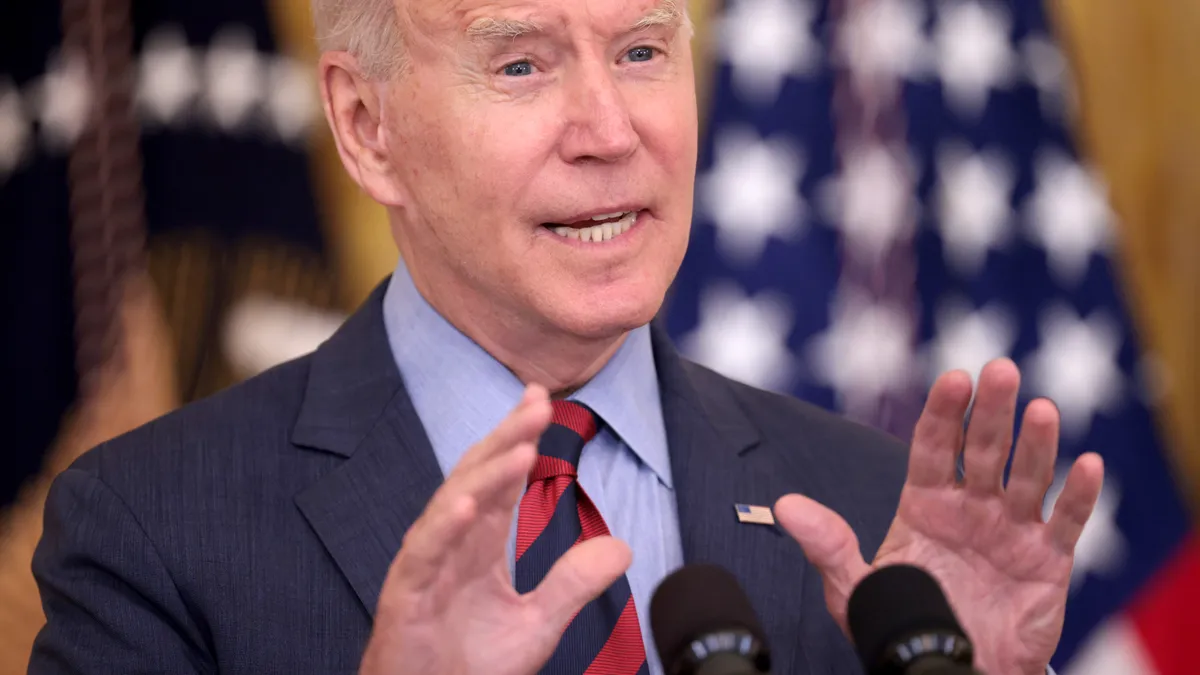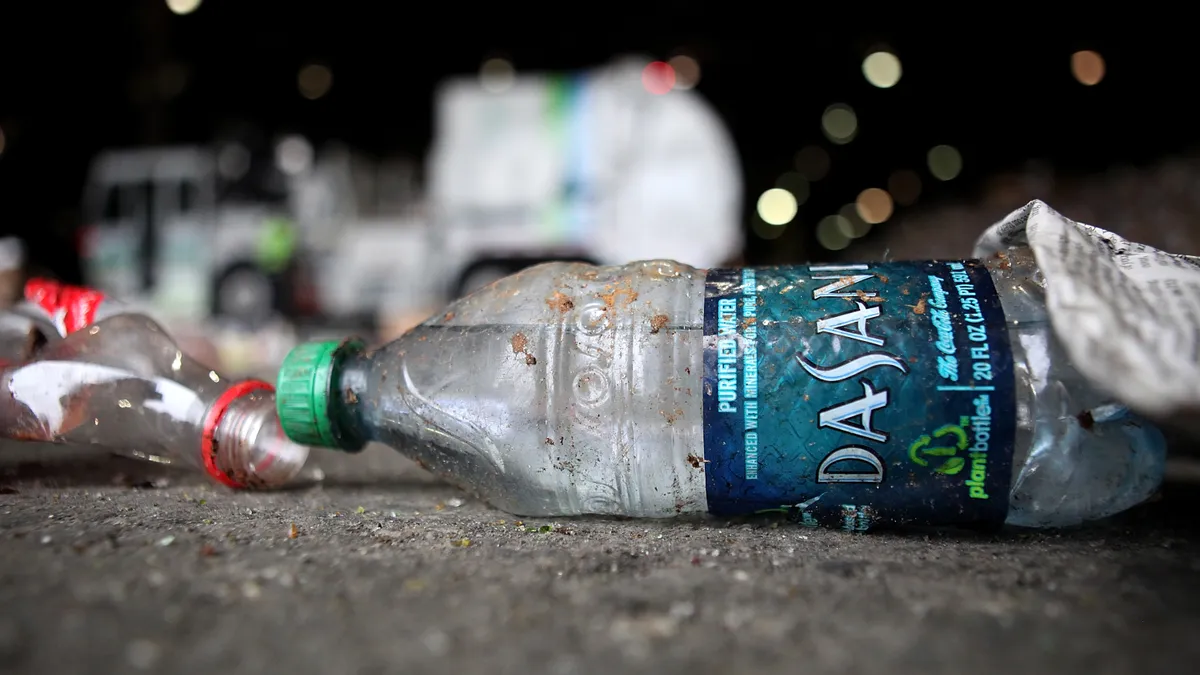The headlines declare, over and over again, China is tired of being the world's garbage dump. That China doesn't want our trash anymore. That China's National Sword is a direct attack on recycling infrastructure and meant to be retaliatory.
Those headlines are based in some basic facts, but lack nuance. China's restrictive actions on imports of scrap and waste are not based in spite. The policies aren't new — and the current action isn't even "National Sword."
How did things get to this point? What is China really after, and what can the industry expect to come next?
Documentaries, language barriers and 'Beautiful China'
The China story is a decades-long trek through policy and specifications. In 2004, exporters shipping to China had to begin registering with the General Administration of Quality Supervision, Inspection and Quarantine (AQSIQ). After those standards and registrations went into implementation, however, things quieted down and the situation was relatively stable.
National Sword, Blue Sky and Green Fence
In late 2013, China introduced the "Green Fence" and later, in 2016, the "National Sword" policies, which were focused on the quality of imports. In April of that year, President Xi Jinping's government approved expanding the catalog of prohibited solid waste imports.
July 2017 is when China made its intentions clear, providing notice with the World Trade Organization (WTO). This notice involved the ban of certain materials, including mixed plastics and papers, and the proposal of a "carried waste," or contamination standard, of just 0.3%. That standard would later be revised and officially went into force at the beginning of March 2018.
The "Blue Sky" campaign kicked off in 2018. Blue Sky is an internal import crackdown that focuses on smuggling of material, rather than contamination or quality.
While restrictive, the ban on 24 material types and the contamination standards are not the same as the National Sword crackdown on imports, with the distinction critical in addressing the situation.
'Beautiful China' vs. 'Plastic China'
Recent political developments in China may have made it more likely that these policies continue. President Xi's political philosophy has been enshrined in China's constitution and more or less cemented power for life. And for Xi, China's environment is a top priority.
Xi and the Communist Party want to ensure a "Beautiful China," and Xi's hours-long address to the party in October focused in part on protecting the country's environment.
In a recent webinar hosted by the National Recycling Coalition, which focused on quarterly market development updates, Robin Wiener, president of the Institute of Scrap Recycling Industries (ISRI), connected this focus on waste imports and protecting the environment to a documentary, "Plastic China."
"It's a very powerful video. It most definitely had an impact," Wiener said. "We were told that President Xi viewed the documentary." Some of the "horrific" scenes in the video, Wiener said, could have had a motivating factor in some of these environmental policies.
In fact, Wiener said that, even though the import restrictions could lead to "a shortfall of over 7 million plastic tons of feedstock needed for manufacturing within China," according to one of ISRI's counterparts in China, the government does not appear too concerned. For Xi's government, those concerns are not as immediately pressing as preserving China's environmental standards — and global reputation.
Language barriers
Another issue, Wiener said, is nailing down a definition of what kind of material China does, and does not, want inside its borders. It makes sense China would not want to import hazardous waste or material that is simply destined for a landfill. What makes less sense is cutting off the supply of scrap, a valuable commodity for manufacturing.
However, there is a literal language barrier impeding the way. The difference between scrap, garbage, waste and recyclables does not translate well into Chinese, Wiener said, which has caused "a lot of the problem."
Another issue is in how to define "carried waste" in different shipments, and what, exactly, would count as contamination of different materials. These differences in translation and imprecise language only serve to exacerbate the trade issues.
What is China really after?
In China, according to ISRI, inspections are continuing and import licenses are declining. Wiener said that she's hearing from counterparts in the country that "enforcement actions are continuing."
There are also reports China is continuing to turn inward, beginning to invest in its own recycling infrastructure. Recent reports show mixed paper exports to China are were down nearly 40% in January YoY. There are some reports this has led to paper mills in the country facing a shortage of supply.
2019
China wants to be more self-reliant. Officials in the country don't want manufacturers to have a need for the import of material. In fact, when China first outlined its materials ban and import restrictions, officials also spelled out the country's plan to boost domestic recycling so imports would no longer be necessary. China's "Implementation Plan to Enhance Solid Waste Import Management System by Prohibiting the Entry of Foreign Waste" plainly displays what the government is after and, in some respects, how it plans to get there.
By the end of 2019, China wants to "gradually halt the importation of solid waste that can be replaced with domestic resources."
The document also clearly lays out that Chinese officials want to improve domestic processing capabilities and "guarantee for the construction of a beautiful China and the comprehensive building of a moderately prosperous society."
The central government is, for example, requiring 46 Chinese cities to have waste sorting plans by the end of 2020, and national press agency Xinhua reports regions in the country are developing food scrap recycling programs, reward programs for recycling and solid waste combustion infrastructure.
It appears, though, the Chinese government is inadvertently hurting some manufacturing in the country. At least two Chinese-owned firms are opening in the United States (one in South Carolina, one in Alabama) pushed, in part, by trade policies.
By investing in the U.S., Chinese manufacturers can circumvent the ban on mixed paper or plastic and the draconian contamination standards, and instead process material in the U.S. and have it shipped to China for manufacturing.
What comes next?
While the U.S. industry may escape the harshest effects of tariffs on steel and aluminum imports, it may not escape retaliatory efforts. China, for example, may now be less likely to consider lifting trade restrictions on scrap, especially if the U.S. enacts further protectionist measures.
China is also enacting on April 2 over 100 new tariffs on U.S. products and commodities, a move which could further hurt the recycling industry by making it less profitable to ship material for sale in China. These include a 25% tariff on scrap aluminum, a big player in many municipal recycling programs.
So far, according to ISRI, there has not been much help from the White House. Wiener said at a recent White House meeting the person in charge of infrastructure development did not give an "enthusiastic" response when Wiener raised the idea of including strong recycling infrastructure in any national plan.
But, she said, members of Congress have been more willing to lend a hand. Senators Dianne Feinstein and Ron Wyden in late January formally asked China's ambassador to the U.S., for example, to help develop a "transition plan" for the new import policies, rather than implement them all at once.
Recent attempts at negotiation from the U.S. and the European Union at the WTO ended with China calling U.S. concerns "illegitimate."
Representatives from the Trump administration, including Department of Commerce Press Secretary James Rockas, did not respond to a request for comment.
Where to focus
Recent data have shown scrap exports increasing to countries including India, Vietnam and Malaysia. Data presented in the webinar show, for example, a 56% YTD growth in PE exports to India.
There are two problem areas when considering new markets, however. One is that China has been, for years, such a huge importer of scrap material that other developing markets cannot overcome the shortfall. The second concern is other countries may follow China's lead.
Wiener said ISRI has been working closely with India as policies from China develop. In October 2017, she said, she was in India and representatives from that country were saying India could reduce barriers to entry for some commodities.
"For far too long, manufacturers of consumer products have externalized the cost of disposing containers and packaging. We need to have a serious conversation with them and policymakers about how to address this."

David Biderman
CEO, Solid Waste Association of North America
By January 2018, however, officials from India were saying that the country did not want "foreign garbage" entering its borders, either — just like China.
"The language that's being used is detrimental to our industry," she said.
So, while developing foreign markets is important, and can help meet some of the new challenges, it may be time for the U.S. recycling and manufacturing industries to look inward, too. But, Wiener said, there is likely no "panacea."
Recyclers and municipal officials should continue to focus on reducing contamination at the bin, which will ultimately make sorting easier at MRFs and produce higher-quality bales. This could, in turn, make stockpiling, which has been seen in some states, less likely.
Despite these steps, however, recycling is likely to change — perhaps even more dramatically than it already has. Experts say recycling could get more expensive, especially as it is becoming a part of a larger battle over global trade.
"The industry built lots of infrastructure and processes to manage recyclables, and the waste stream has been rapidly changing, with more plastic and less paper, and now the largest export market has largely removed itself from the equation," CEO of the Solid Waste Association of North America (SWANA) David Biderman told Waste Dive in an email. "This is a very complicated issue and local, state, and federal officials, along with the private sector, all have important roles in ensuring that we have sustainable recycling programs."
This work could include partnerships between state agencies and private enterprises to fund recycling infrastructure, for example. The work could also include developing new, innovative methods of reusing hard-to-recycle material, such as e-waste or developing state-level polices to address contamination.
The work can also include changing, or at least re-thinking, current modes of manufacturing and recycling. ISRI stresses the need to "Design for Recycling," so that consumers begin to focus less on single-use items, for example.
That re-thinking could also look at different models of responsibility for waste that is produced. While the debate on extended producer responsibility is still ongoing, it may be a valuable conversation to have — though ISRI has taken a formal stance against EPR in many instances.
"For far too long, manufacturers of consumer products have externalized the cost of disposing containers and packaging," Biderman wrote. "We need to have a serious conversation with them and policymakers about how to address this."
Like Wiener said, though, there will not be a panacea or a silver bullet. Each day, the industry needs to do "a lot of little things," from investing in infrastructure U.S. to cracking down on quality.
"We need to work with the Chinese and other markets to show how importantly we take responsible garbage," she said.










